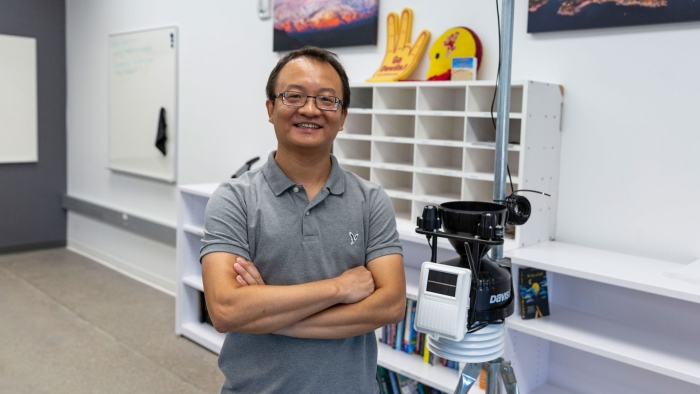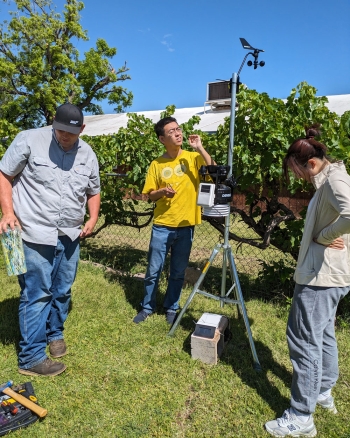How can cities go green to beat the heat?
ASU researcher explains how urban green spaces can impact sustainability practices in Phoenix, nationwide
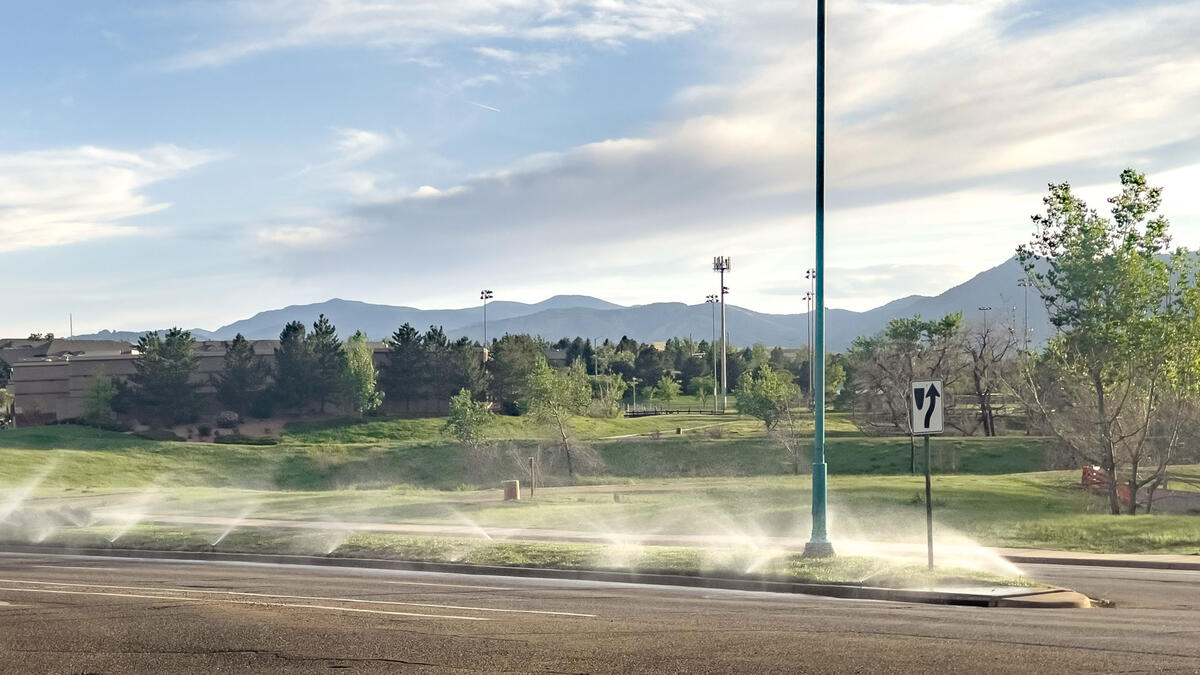
An irrigated urban green space in Gilbert, Arizona, part of the Phoenix metropolitan area. Zhihua Wang, an associate professor of civil, environmental and sustainable engineering in ASU's Ira A. Fulton Schools of Engineering, and his former doctoral students Peiyuan Li and Chenghao Wang pioneered first-of-its-kind research to understand how green spaces and irrigation systems can reduce the urban heat island effect and reduce carbon emissions. Photo courtesy Peiyuan Li
As people across the United States turn up their air conditioners to combat rising summer temperatures, researchers are investigating ways to sustainably and effectively cool down entire cities.
Urban areas are important battlegrounds in the fight against the heat island effect and climate change resulting from the emission of powerful greenhouse gases such as carbon dioxide. For many years, adding green spaces such as parks and other features, like plants, has been a common strategy to manage both heat and carbon emissions in cities. However, research to date has been unclear about how effective urban green spaces actually are at mitigation.
“The idea is to use urban greening and irrigation to cool the environment and, meanwhile, harvest the co-benefit of carbon mitigation,” says Zhihua Wang, an associate professor of civil, environmental and sustainable engineering in the Ira A. Fulton Schools of Engineering at Arizona State University. “But our research suggests that the actual pathway is much more complicated.”
Until recently, a lack of data and modeling capacity has made it very difficult to understand the true effects of green spaces on surrounding urban neighborhoods, rendering evidence-based decision-making nearly impossible.
Wang, a faculty member in the School of Sustainable Engineering and the Built Environment, part of the Fulton Schools, is focused on understanding the dynamics of urban climate. His research team’s latest work, published in the journal Nature Communications, is the first of its kind to explain the interactions between heat, carbon emissions, climate and urban green spaces across the U.S.
“This is pioneering work on the study of the trade-offs of urban greening and irrigation on carbon dioxide physics,” Wang says.
Wang worked with two of his civil, environmental and sustainable engineering doctoral students on this research project: Peiyuan Li, who is now a postdoctoral researcher at the University of Illinois Urbana-Champaign, and Chenghao Wang, who is now an assistant professor at the University of Oklahoma.
Cities in the Phoenix metropolitan area and beyond can use the results of this research to design green spaces and evaluate outdoor irrigation guidelines, aligning with urban sustainability goals to reduce heat stress, water use and carbon emissions.
New approaches lead to new knowledge
To figure out the relationship between urban green spaces, temperature and carbon emissions, researchers must model complex interactions between many environmental factors.
For example, plants can capture carbon from the air, but there is another side to that equation. Soil respiration — the process by which plant roots and other organisms that live below ground exhale — accounts for more than half of carbon dioxide emissions in urban areas.
Many factors influence the rate of soil respiration, including air and soil temperature and the amount of irrigation used, making this already complicated phenomenon more difficult to understand and predict. Furthermore, soil respiration is only one of many factors researchers need to consider.
Wang and his research team used a unique combination of models to better understand how soil respiration and other aspects related to urban greening and irrigation affect temperature and carbon dioxide emissions.
The Arizona Single-Layer Urban canopy Model, or ASLUM, is an urban land surface model that represents surface dynamics — including heat exchange, moisture levels, pollutants and flow physics — in big “street canyons.” The model was first developed by Wang as a graduate student at Princeton University in 2009, and it has been refined over the years by student researchers at ASU. Li’s contributions to this model as an ASU doctoral student earned him a Fulton Schools Dean’s Dissertation Award in 2021.
“Trees and other vegetation are multi-functional in regulating our environment, and how people irrigate and manage those green spaces changes the environment, too,” Li says. “So, we need a more comprehensive urban model to simulate these complicated processes and quantify their impacts. This new model can precisely guide urban greening strategies to achieve optimum environmental benefits.”
ASLUM is one of only a few models that can depict the dynamics of carbon dioxide exchange attributable to green spaces in urban areas. Pairing a land surface model like ASLUM with a regional climate model further clarifies the big picture.
Wang and his research team used ASLUM version 4.0 paired with the regional climate model Weather Research and Forecasting, or WRF, to better study heat and carbon dioxide dynamics in urban areas.
“By coupling ASLUM with WRF, we are capable of studying the complex heat-carbon interactions in all major U.S. cities and, for the first time, evaluating the potential trade-off or co-benefit of urban greening to counteract climate-carbon feedback,” Wang says.
How Phoenix and the US can benefit
In humid or temperate cities, such as Chicago, New York City and Atlanta, Wang’s research team found that urban greening and irrigation counteract warming and carbon dioxide emissions. Wang equates the effect of adding more irrigation to existing green spaces in Atlanta to replacing 16,100 gasoline-powered cars with electric vehicles.
By contrast, arid regions such as the Phoenix metro area need to be smarter about their use of urban greening and irrigation systems, Wang says.
“The story in Phoenix is more challenging, and also more intriguing, as irrigation of urban vegetation can potentially lead to an increase of carbon dioxide emissions by enhancing soil respiration,” he says.
“The main message from this study is that we cannot adopt a straightforward solution in Phoenix by adding more lawns, planting more trees and irrigating them without limit.”
Wang’s previous work, published in the research journal Applied Energy in 2016, explored the potential for shade trees and urban lawns to promote cooling and energy saving in desert cities. Combining that work with the results from his team’s latest research, Wang found that native trees and shrubs are more effective solutions. Dense greenery options such as grass lawns and golf courses are more suited for naturally wetter environments.
For watering systems, Wang says drip irrigation results in better cooling and reduced carbon dioxide emissions from soil respiration than flood or sprinkler irrigation in desert cities. This approach also preserves the region’s limited water supply.
Working toward a greener future for Phoenix
Wang’s efforts to combat the urban heat island effect in Phoenix and beyond continue with further research on smart irrigation systems for urban vegetation in Arizona. The work, funded by the Arizona Board of Regents, in collaboration with the University of Arizona and Salt River Project, aims to optimize cooling and water use.
The new project will also investigate how urban greening and irrigation can influence carbon neutrality, which is the act of balancing the amount of carbon dioxide emitted and recaptured from the atmosphere.
Wang says, “It is of pivotal importance to work with stakeholders and industry partners to convey our research findings to make real-world impact.”
More Environment and sustainability
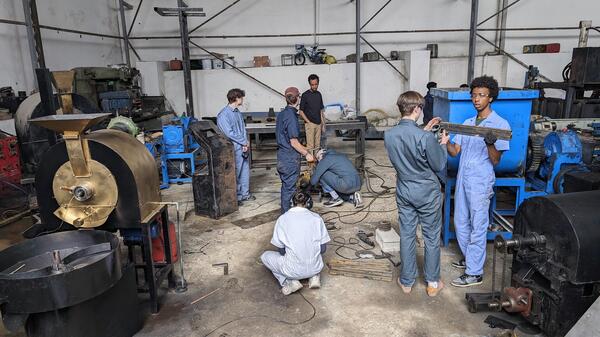
Student engineers travel to Ethiopia this summer to help protect local wildlife
The jagged peaks in Ethiopia’s Simien Mountains National Park are home to the rare gelada monkey. It is the only place in the entire world where the endangered animals — nicknamed the “bleeding-heart…

Global Futures Laboratory at ASU joins DOE initiative to empower women in clean energy
The U.S. Department of Energy-led Clean Energy Education and Empowerment Initiative has announced that Arizona State University now joins the initiative as a partnering university. The Julie…
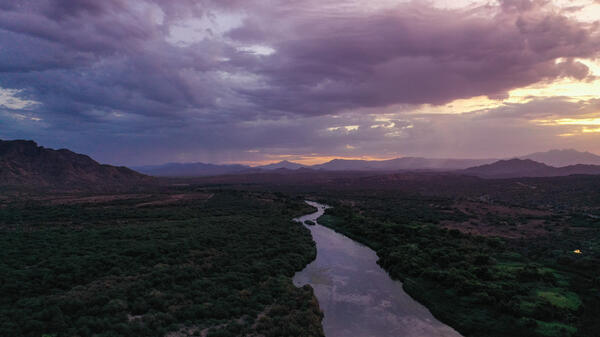
Computer modeling shows where Arizona's winter precipitation originates
The Sun Corridor in Arizona in the semi-arid Southwestern U.S. is a land of seemingly unlimited growth that is constantly colliding with physical constraints. It is mountainous but also home to a…
